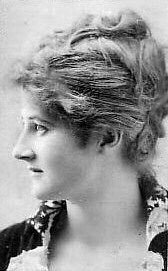|
United States of America
Union Coffee Company – Actress Mary Anderson
White Metal Trade Token Medal 40mm (20.10 grams)
Issued Late 1800’s
ALAROMA BUNOLA MARY ANDERSON, Mary facing right.
THE UNION COFFEE CO. LIMITED * NEW YORK * U C O C, Logo.
Medal Notes:
There was a coffee and tea company that included this series of tokens / medals in each of their packages.
You are bidding on the exact item pictured, provided with a Certificate of Authenticity and Lifetime Guarantee of Authenticity.
Mary Anderson (later Mary Anderson de Navarro; July 28, 1859 – May 29, 1940) was an American theatre actress.
Mary Antoinette Anderson was the daughter of Charles Henry Anderson, an Oxford-educated New Yorker, and his wife, Antonia Leugers; the latter had been disowned by her Philadelphia Catholic family after the couple had eloped to California.
Shortly after Mary was born, the couple moved to Louisville, Kentucky, where her father enlisted in the Confederate States Army in the American Civil War. He was killed in action at Mobile when she was three.
Mary was educated at the Ursuline convent and the all-girl Presentation Academy in Louisville. She was an unenthusiastic pupil except for an interest in reading and acting Shakespeare. Encouraged by her stepfather, Dr Hamilton Griffin, at 14 she was sent to New York for ten lessons with the actor George Vandenhoff, her only professional training.
In 1875, she made her first stage appearance at a benefit performance at Macauley’s Theatre in Louisville, Kentucky in the role of Shakespeare’s Juliet. The manager, Barney Macauley, was sufficiently impressed to extend the booking to a week as Juliet and further roles including Julia in Sheridan Knowles’s The Hunchback, Bianca in Henry Hart Milman’s Fazio, and R. L. Sheil’s Evadne.
Further engagements at St Louis, New Orleans and John McCullough’s theatre in San Francisco led to a contract with John T. Ford. Starting as Lady Macbeth in his Washington theatre in 1877, she began an extensive US tour, culminating with a six-week engagement in Edward Bulwer Lytton’s The Lady of Lyons at the 5th Avenue Theatre, New York. Critical review was mixed, but she was immediately popular with the public as “Our Mary.”
From this point she enjoyed a twelve-year career of unbroken success, with regular New York performances and US tours. In 1879 she went on a voyage to Europe, meeting Sarah Bernhardt and Adelaide Ristori.
In 1883, after starring in an American production of W. S. Gilbert’s Pygmalion and Galatea, she went on the London stage at the Lyceum Theatre, remaining in England for six years to perform to much acclaim including at the Shakespeare Memorial Theatre in Stratford-on-Avon. Her first season there, she starred in Gilbert’s Comedy and Tragedy as well as in Romeo and Juliet in 1884.
In 1887 in London she appeared in The Winter’s Tale in the double role of Perdita and Hermione (the first actress to include this innovation). This production ran to 160 performances, and was taken back to the United States. She invited writer William Black to appear in the production, but, even in a non-speaking role, he froze up and interrupted the performance. In 1889, however, she collapsed on stage due to severe nervous exhaustion during a performance at Albaugh’s Theatre in Washington. Disbanding her company, she announced her retirement at the age of 30. Some commentators, particularly in the British press, ascribed this turn of events to hostile press reviews on her return to the U.S. The author Willa Cather went further and blamed a specifically hurtful review from a close friend.
|










